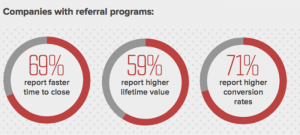
Project management is the key to sticking to your budget and deadline, whilst keeping the most important tasks at the forefront of your company. Without it, you leave the future of your business at the mercy of your teams and employees (which, in case you weren’t aware, is not a good business model).
For such an important process, the project management steps are a little muddy, with sources citing differing numbers of steps, timelines, etc. Then again, it’s a massive topic with a huge margin for error; how the hell do you convey these steps when the project could be anything from “get winter clothes in stock” to “grow to $ 220,000 monthly recurring revenue”?

Well, we here at Process Street hate making things complicated, so we’ve simplified the project management steps of any and every undertaking to five easy stages.
- Conception and Initiation
- Definition and Planning
- Launch and Execution
- Performance and Control
- Project Close

If you’re looking to structure your next big push, or you just want to set and track realistic deadlines, then this is the process for you. Then again, feel free to skip ahead to any particular step you’re after.
Project Conception and Initiation
The first of our project management steps is to settle on the idea of a project; to scratch out the concept and agree that it will be taken further than the drawing board. You’ll have an idea, do a little research to see how it would be completed, then pitch it to the relevant powers for examination and approval.
This stage will change a lot depending on the idea which is being developed. For example, if you want to implement a new feature then you’ll need to consult the head of your development team. On top of the relevant team heads, you’ll also be consulting with your shareholders in order to keep them informed of where their money is being spent.
Is it feasible, and is it valuable?
 The key with the conception stage is to examine your project for both its feasibility and value to the organization; an easy project will be useless if it does not benefit the company, and a useful project will just waste resources if you aren’t certain that it’s plausible in the first place.
The key with the conception stage is to examine your project for both its feasibility and value to the organization; an easy project will be useless if it does not benefit the company, and a useful project will just waste resources if you aren’t certain that it’s plausible in the first place.
Example
Let’s take an example project to run us through each step, in the form of creating a new ebook. You don’t want to have to run a 50 step management checklist along with the rest of your marketing processes, so we’ll keep it simple.
In the conception and initiation phase, we need to get a rough idea of how long it will take to make, how much it will cost, and the effect it will have. After that, the idea will be taken to a decision-making team (in this case the head of marketing and the CEO) to see if it’s worth pursuing. If the value is worth the perceived difficulty, it’s time to move onto definition and planning.
Project Definition and Planning
The second project management step is definition and planning. Once your project’s been given the go-ahead, it’s time to stamp out the scope, schedule, and cost of a project. This is usually done by drawing up a project plan, scope or charter, then calculating a budget, the resources needed, and a schedule.
It’s worth noting that all of these items are subject to change during the project. Orders could be delayed or problems could arise, so when drawing up these plans you need to give some leeway and predict the most likely area for delays. You should also note the flexibility of the teams working on the project, as if a delay occurs you may need to divert resources in order to hit the deadline.
Have SMART and CLEAR goals

Two popular methods of creating goals for a project are SMART and CLEAR. SMART stands for:
- Specific – Setting goals to cover who, what, where, when, which and why
- Measurable – Making sure that you know how to measure the progress to and success of a goal
- Attainable – Lay out how to achieve your most important goals
- Realistic – Ensure that everyone is willing and able to achieve your goals
- Timely – Making sure that you can a timeline in which you can hit your goals
Meanwhile CLEAR ensures goals are:
- Collaborative – Check that your team is encouraged to work together
- Limited – The scope of your goals should be limited enough to make them manageable
- Emotional – Your employees should be able to form an emotional connection to your goals by tapping into their passions.
- Appreciable – Large tasks need to be broken down to make them more achievable
- Refinable – Goals need to be flexible to adapt and be refined as new situations arise
Whichever method you choose, the basic principles which need to be set out are the cost of the project, the quality of the end result, the resources which are available (or which will be diverted), and a reasonable timeline for each task to be completed.
Example
Going back to our ebook, the planning and initiation stage would involve meeting with the marketing team and stamping out a timeframe for each chapter of the book to be completed. Once the topic has been set and assessed (for the difficulty of writing), these dates will become more solid.
The person responsible for writing each chapter will be assigned, along with the task of designing and creating the ebook itself. If there is no in-house designer, we would discuss our options for outsourcing the task and price it up accordingly.
Another aspect which would need to be planned would be the launch of the ebook. For example, if the book is being used as a content upgrade, a landing page would need to be created with a reasonable flow for a user to subscribe to the email list.
Risks such as hidden topic depth or difficulty in securing a designer for the ebook would be assessed, and action plans for the more likely scenarios drawn up, such as diverting another member of the marketing team to work on a chapter.
Project Launch and Execution
The project launch and execution phase is next, and this is where things kick into overdrive. As the title would suggest, this is where work begins on the project, although one or two tasks must be completed before your team gets stuck into the meat of the topic.
First, you need to ensure that you have the deliverables of the project set in stone – you should know what needs to be completed, how it should be done, who needs to work on it, and when it has to be complete by (with some flexibility, depending on the risks you’ve identified). Once you’re sure that you have this collected and approved, the kickoff meeting will take place.
The project kickoff meeting is vital. Here is where you will meet with the teams involved and distribute the necessary resources, tasks, timeline, responsibilities, and any other important information related to the project.
Not only do you have to convey all that, but (going back to your CLEAR goals) you need to make sure that your team understands exactly what the project is and why they should both care and be enthusiastic about it. Yes, I’m aware of how corny that sounds.
Assign tasks to the employees that fit them
Put it this way; if you know that John from marketing is a whizz with data and enjoys that kind of work, consider assigning him a data-crunching task, as your goal will not only be achieved quicker (from his experience) but to a higher quality (from his passion for the work). If you were to assign him the task of researching and writing on a topic which he both knows nothing about and contains no data backing whatsoever, the end result will both take longer and be of an inferior quality.

During this midpoint in our project management steps it’s also vital to set up some sort of tracking and communication system or standard. You need to be able to quantify the progress of your individual teams at any point in the project, and also regularly touch base with (at least) the team managers in order to make sure that everything is running smoothly.
Example
With our ebook, the launch and execution stage would involve figuring out what each chapter will consist of, assigning various team members (most likely marketers) to complete said chapters, giving a deadline for each chapter, and carving out a regular meeting time during which your team’s progress and problems will be relayed. Everyone should know what they are working on, why they are working on it, when it should be complete by, and what everyone else is responsible for.
Project Performance and Control
The performance and control step of project management occurs over the time from the project’s launch to its completion, and serves as a method to measure and compare the status of the project compared to the original plan. This phase can require relatively little effort on the project manager’s part, or be the most stressful section of the entire undertaking, depending on how smoothly everything runs.
Using the previously set out meeting times, you need to be regularly talking to everyone involved with the project (or at least the team managers) and ensuring that all is running smoothly. This is usually done through the use of KPIs (Key Performance Indicators); the quantifiable measure of progress I talked about above.
Use KPIs to track your project’s progress
Although the KPIs you measure will vary drastically depending on the project you’re undertaking, they will usually consist of two or more of the following four aspects.Project objectives, which are the measure of if a project is staying on schedule and on
- Project objectives, which are the measure of if a project is staying on schedule and on budget, according to stakeholder objectives.
- Quality deliverables, which means looking to see if tasks are being completed to the right level of quality.
- Effort and cost tracking, meaning that you’re checking to see if you’re staying on the expected deadline and budget, and perhaps predicting the completion date based on this.
- Project performance, which is tracking how many problems have occurred and how quickly they were dealt with.
If all goes well, and the KPIs are lining up without a hitch, the project manager will pretty much just have to keep checking in with each team periodically. If, however, a deadline is missed, or a problem arises, you may have to shift or reassign resources and schedules in order to make the most out of your new situation.
Example
For our ebook, let’s say that you’ve set out a two-month deadline for the final product, and you meet twice a week with your marketing team to check on their progress. If the chapters are getting completed in line with your expectations, there’s no need to shift around resources (unless your aims develop or change).
If problems arise, such as a chapter being more complex than originally thought or team members having to take time off for one reason or another, you may have to bring in someone who wasn’t already working on the project, or shift the responsibilities of the current workforce on the project to better suit the new situation.
Project Close

The final of our project management steps is that of the project’s close. This is where, for all intents and purposes, the project has been completed and the outcome has been approved. If all is completed to a satisfactory standard, then business can either return to usual or move onto the next project.
The first major task of this section is the evaluation of the project. The ultimate goals / plan of the project need to be compared with the actual outcome and assessed as to the quality, accuracy, and speed at which it was achieved. For example, the best outcome would be a project which was completed ahead of schedule, within or below budget, to a high quality and accuracy, with few problems. Unfortunately, that truly is a dream scenario.
More likely is the situation whereby you need to assess which problems came up during the course of the project and how well they were dealt with – this includes an analysis of how and why everything that took place did so. Was your team performing so well that they beat your schedule? Were the problems which arose outside of your control or foresight? Did your team still manage to complete their work to a satisfactory standard and timeline considering the difficulties which they faced?
Evaluate and finalize the project
This all needs to coincide with terminating any contractors which were hired to help on the project, producing a final budget and project report, and collecting all of the documents associated with the product in a single place for storage / filing. Think of it as a final status report, along with cleanup after the project is complete.
Another aspect of this phase (which not all teams take advantage of) is the congratulations to those involved with the project. Depending on the size and difficulty of the project, rewarding your team for working hard with (for example) a small work event or bonus is a great way to encourage them to do their best on the next project, and to also make them feel appreciated and form a stronger connection to the company.
Example
Returning to our ebook one final time, the project closing step would be after the ebook’s public launch. One complete, the immediate benefits would be tracked (eg, increased conversion rates), any expenses on items such as the design of the ebook would be totaled, and contracts with freelancers terminated.
—
Not sure how to get your integrations up and running? Check out our free business process automation guide.
With the vast array of things that can go wrong with any given project, it’s about time that something was simplified. Still, what do you think about our project management steps? How does the management of your projects usually flow? I’d love to hear from you in the comments below.
Business & Finance Articles on Business 2 Community(193)








